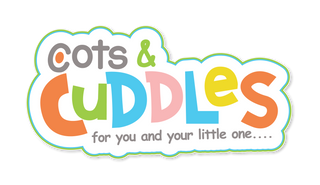Introduction:
Welcome to our blog dedicated to parents of children aged 2 to 3 years. As your child enters the curious and energetic toddler stage, venturing out to public places like restaurants or stores can present both exciting opportunities and potential challenges. In this comprehensive guide, we will delve into the art of navigating public outings with your little one, focusing on how to handle behavioral challenges and meltdowns that may arise during these adventures. At this stage of development, your child is rapidly growing and exploring the world around them. They are developing their cognitive, emotional, and social skills, which can lead to a range of behaviors and reactions in public settings. It's important to remember that these challenges are normal and part of their growth process.
Our blog aims to provide you with practical strategies, expert advice, and insights into understanding and managing your child's behavior during public outings. By equipping yourself with the right tools, knowledge, and mindset, you can create positive experiences for both you and your child, nurturing their social development and fostering a sense of confidence and adaptability. Throughout this blog, we will explore various aspects of handling public outings, from understanding your child's developmental milestones to preparing for these outings, and managing any potential behavioral challenges or meltdowns that may occur. We will also provide tips for specific public places like restaurants and stores, offering suggestions on how to make these experiences more enjoyable and manageable for everyone involved.

Additionally, we will discuss ways to support your child's sensory needs, promote positive behavior and emotional regulation, and establish a strong parent-child connection that will serve as a foundation for successful outings. Remember, each child is unique, and what works for one may not work for another. It's essential to adapt these strategies to suit your child's individual needs and temperament. By the end of this blog, we hope you will feel more confident and prepared to embark on public outings with your 2 to 3-year-old child. Together, we can navigate these adventures with patience, understanding, and a dash of creativity, ensuring that every outing becomes an opportunity for growth, connection, and cherished memories.
Understanding Developmental Milestones
Understanding the developmental milestones of children between the ages of 2 to 3 years is essential for effectively managing their behavior during public outings. At this stage, children experience significant cognitive, emotional, and social changes. Let's explore the key aspects of their development in the following sub-sections:
-
Introduction to the 2-3 Year Age Group:
-
Cognitive and Emotional Development:
a. Language Skills: Children at this age begin to use two- to three-word sentences, expanding their vocabulary and understanding. They can express their needs and wants more effectively, but may still struggle with complex language concepts.
b. Problem-Solving: Toddlers become more curious and start exploring cause-and-effect relationships. They enjoy puzzles, sorting activities, and simple problem-solving tasks.
c. Emotional Regulation: Emotional outbursts and tantrums are common at this stage as children learn to manage their emotions. They may have difficulty controlling their impulses and may struggle with transitions and frustration.
-
Social Skills and Communication Milestones:
a. Play Skills: Children engage in parallel play, where they play alongside others without significant interaction. They may start imitating others and engaging in simple imaginative play.
b. Social Awareness: Toddlers begin to show empathy and recognize basic emotions in others. They may exhibit possessiveness and struggle with sharing toys or attention.
c. Independence: This age group seeks autonomy and independence. They want to do things on their own, such as dressing themselves, feeding, or attempting simple tasks.
d. Attention Span: While attention spans are still relatively short, children can engage in structured activities for longer periods, focusing on tasks they find interesting.
Preparing for Public Outings:
-
Timing and Scheduling:
- Choose the right time of day: Plan outings during your child's optimal time when they are well-rested and fed. Avoid scheduling outings close to nap or meal times.
- Plan for shorter durations: Start with shorter outings to gradually build your child's tolerance for public spaces. As they become more comfortable, you can extend the duration of the outings.
- Be aware of peak times: Avoid crowded periods when public places may be overwhelming. Opt for quieter times to minimize sensory overload.
-
Setting Realistic Expectations:
- Understand age-appropriate behavior: Recognize that children aged 2 to 3 years are still developing self-control and may struggle with impulse control. Set realistic expectations for their behavior based on their stage of development.
- Anticipate challenges: Identify potential triggers and challenges your child may face during outings. This could include waiting in lines, transitions, or unfamiliar environments. Prepare strategies to address these challenges proactively.
-
Establishing Ground Rules and Boundaries:
- Communicate expectations: Clearly communicate your expectations to your child before the outing. Use simple and concise language to explain the rules and behavior you expect from them.
- Reinforce positive behavior: Highlight positive behaviors your child can demonstrate during outings, such as staying close, using inside voices, or sharing. Reinforce these behaviors with praise and rewards.
-
Packing Essentials:
- Comfort items: Bring familiar comfort items, such as a favorite toy or blanket, to provide a sense of security in unfamiliar surroundings.
- Snacks and drinks: Carry snacks and drinks to keep your child satiated and prevent hunger-induced meltdowns.
- Extra clothing: Pack a spare set of clothes in case of accidents or spills.
- Diapers and wipes: If your child is still in diapers, ensure you have an adequate supply of diapers and wipes.
-
Safety Measures:
- Childproofing: Be mindful of potential hazards in public places. Ensure your child's safety by assessing the environment for dangers and taking necessary precautions.
- Identification: Carry identification for your child, including emergency contact information, in case of any unforeseen circumstances.
-
Role-Playing and Practice:
- Before heading out, engage in pretend play scenarios with your child to familiarize them with expected behavior during outings. Practice waiting in line, using manners, and following instructions.
- Visit local parks or less crowded public spaces to gradually expose your child to new environments and help them develop the necessary skills for public outings.
Strategies to Prevent Behavioral Challenges:

-
Building a Strong Parent-Child Connection:
- Spend quality time with your child regularly, engaging in activities they enjoy.
- Foster open communication and encourage your child to express their thoughts and emotions.
- Show empathy and understanding towards their needs and feelings.
- Establish a secure attachment by providing comfort and reassurance during difficult moments.
-
Providing Opportunities for Independence:
- Encourage your child to make choices within reasonable limits, such as selecting their outfit or snack.
- Allow them to engage in age-appropriate tasks, such as putting away toys or helping with simple chores.
- Foster a sense of autonomy and competence, boosting their confidence and reducing frustration.
-
Positive Reinforcement and Rewards:
- Use praise and positive reinforcement to acknowledge your child's good behavior and efforts.
- Offer specific and genuine compliments to highlight their achievements.
- Consider using a reward system, such as a sticker chart, to motivate and encourage positive behavior.
-
Consistent and Clear Expectations:
- Establish clear rules and expectations for behavior, explaining them in simple and age-appropriate language.
- Ensure consistency in enforcing these expectations across different environments.
- Provide gentle reminders of the rules before and during outings to reinforce expectations.
-
Effective Communication:
- Use simple and concise language to explain what is expected of your child during outings.
- Use visual cues, such as gestures or pictures, to support verbal instructions.
- Encourage your child to communicate their needs and emotions, and validate their feelings.
-
Preparation and Transitioning:
- Before going out, talk to your child about the upcoming outing, describing what they can expect.
- Create a routine or visual schedule to help them understand the sequence of events.
- Allow for enough time for transitions, providing warnings beforehand to help them prepare for change.
-
Encouraging Healthy Sleep and Nutrition:
- Ensure your child gets adequate sleep, as lack of sleep can contribute to behavioral challenges.
- Provide nutritious meals and snacks to maintain stable energy levels throughout the day.
- Avoid outings during your child's typical nap or mealtime, as hunger or fatigue can increase the likelihood of behavioral issues.
-
Engaging Activities and Distractions:
- Bring along small, quiet toys or books that can keep your child entertained during outings.
- Engage them in interactive games or conversation to divert their attention from potential triggers.
- Plan breaks or short intervals for active play or movement to release excess energy.
Managing Behavioral Challenges During Outings:
a. Recognizing Early Signs of Discomfort or Overstimulation:
- Identifying signs of fatigue, hunger, or boredom.
- Watching for cues of overstimulation, such as increased agitation or withdrawal.
- Paying attention to nonverbal communication like facial expressions and body language.
b. Effective Communication Techniques:
- Use clear and simple language to explain expectations and rules.
- Maintain eye contact and get down to your child's eye level for better engagement.
- Practice active listening and validate their feelings to help them feel understood.
- Give choices when appropriate to empower your child and provide a sense of control.
c. Diversion and Distraction Tactics:
- Carry small toys, books, or favorite comfort items to redirect their attention.
- Engage your child in interactive games or sing-along songs to keep them engaged.
- Point out interesting sights or objects in the environment to captivate their curiosity.
- Encourage conversation or storytelling to divert their focus from potential triggers.
d. Reinforcing Positive Behavior:
- Praise and acknowledge your child's good behavior and efforts to follow instructions.
- Use specific and descriptive praise, highlighting their positive actions.
- Consider a reward system such as a sticker chart to reinforce desired behavior.
- Celebrate small victories and milestones to motivate your child.
e. Time-Out and Cooling-Off Periods:
- If the situation escalates and your child becomes unruly, find a quiet corner or safe space.
- Allow them time to calm down and regulate their emotions.
- Stay nearby and offer comfort or reassurance as needed.
- Once your child has composed themselves, discuss the situation calmly and provide guidance.
f. Consistency and Predictability:
- Establish consistent routines and rules for outings.
- Set clear expectations and explain the consequences of inappropriate behavior.
- Follow through with predetermined consequences if necessary, but focus on teaching, not punishing.
- Be patient and provide ample opportunities for your child to learn and improve.
g. Seeking Support:
- Reach out to other parents or join parenting groups to share experiences and seek advice.
- Consult professionals, such as pediatricians, therapists, or parenting specialists, if behavioral challenges persist or worsen.
- Take advantage of community resources, such as parenting workshops or classes, for additional guidance and support.
Tips for Specific Public Places:

a. Restaurants:
i. Choosing Family-Friendly Restaurants: Look for restaurants that offer a welcoming environment for families with young children. Consider places with kid-friendly menus, high chairs, and play areas if available.
ii. Preparing for the Dining Experience: Talk to your child about the upcoming restaurant visit. Explain what behavior is expected and discuss basic table manners such as using utensils, staying seated, and using an indoor voice.
iii. Engaging Activities and Distractions: Bring along small, quiet activities or toys that can keep your child entertained while waiting for food or during moments of restlessness. Coloring books, storybooks, or small puzzles can be great options.
b. Stores:
i. Setting Expectations for Shopping Trips: Before entering a store, explain to your child what you are there for and set clear expectations about behavior. For example, let them know that they need to stay close to you and avoid touching things unless given permission.
ii. Involving Your Child in the Process: Give your child small tasks or choices to make during shopping trips, such as picking out a specific item or helping you compare options. This can help them feel engaged and involved.
iii. Handling Impulse Buying and Requests: It's common for children to be tempted by toys or treats in stores. Set boundaries and explain that sometimes it's not possible to buy everything they want. Acknowledge their desires but gently redirect their attention to the items you came to purchase.
c. General
i. Plan for Breaks: Young children have limited attention spans, so plan for short breaks during outings. Find a quiet corner or designated area where your child can have a brief break from stimuli if needed.
ii. Pack Snacks and Drinks: Carry a small bag of healthy snacks and water to keep your child nourished and hydrated during outings. Hunger or thirst can contribute to irritability or meltdowns.
iii. Stay Calm and Patient: If your child becomes upset or displays challenging behavior, remember to stay calm and patient. Take a deep breath, use a soothing tone, and offer comfort and reassurance. Responding with empathy can help de-escalate the situation.
iv. Exit if Necessary: If your child's behavior becomes unmanageable or they are having a full-blown meltdown, it's okay to leave the public place if needed. Prioritize your child's well-being and consider revisiting the outing when they are in a better state.
Supporting Your Child's Sensory Needs
Children at the age of 2 to 3 years are still developing their sensory processing skills, which refers to how they take in and interpret information from their environment through their senses. Some children may be more sensitive to sensory input or may seek out sensory stimulation. Understanding and addressing your child's sensory needs can greatly contribute to managing behavioral challenges and meltdowns during public outings. This section will explore strategies to support your child's sensory needs during these outings.
-
Recognizing Sensory Overload:
a. Understanding Triggers: Learn to identify situations or stimuli that may overwhelm your child's senses. These triggers can vary from loud noises and bright lights to crowded spaces or strong smells.
b. Observing Signs of Overload: Pay attention to your child's behavior and physical cues. Signs of sensory overload may include covering ears, avoiding certain textures or environments, increased irritability, or difficulty focusing.
-
Strategies to Reduce Sensory Overload:
a. Plan Ahead: Choose outings and environments that are more sensory-friendly, if possible. Look for quieter or less crowded times to visit public places, such as restaurants or stores.
b. Provide Sensory Breaks: Integrate regular breaks during outings to allow your child to regroup and process sensory input. Find a quiet corner or create a calming space where your child can relax and engage in calming activities.
c. Offer Comfort Items: Allow your child to bring along comfort items such as a favorite stuffed animal, blanket, or sensory toy that can provide a sense of security and familiarity.
d. Dress Appropriately: Dress your child in comfortable clothing that suits the weather and avoids any clothing that may cause discomfort, such as scratchy fabrics or tight shoes.
e. Use Noise-Canceling Headphones: Consider using noise-canceling headphones to reduce auditory stimuli in noisy environments.
-
Encouraging Sensory Exploration in Public Spaces:
a. Gradual Exposure: Introduce your child to new sensory experiences gradually. Start with low-intensity sensory stimuli and gradually increase the exposure over time to build their tolerance.
b. Sensory-Friendly Activities: Engage your child in sensory-friendly activities during outings. For example, you can encourage them to touch different textures, listen to calming music, or explore sensory bins or interactive displays in stores.
c. Encourage Movement: Physical activities can help regulate sensory input. Allow your child to move and engage in appropriate physical play during outings, such as walking, jumping, or climbing on designated structures.
-
Seek Professional Support:
a. Occupational Therapy: If you notice persistent challenges with sensory processing, consider seeking the guidance of an occupational therapist who specializes in sensory integration. They can provide tailored strategies and activities to support your child's sensory needs.
b. Consultation with Professionals: Speak with pediatricians, early childhood educators, or parenting specialists who can provide additional insights and recommendations specific to your child's sensory needs.
Promoting Positive Behavior and Emotional Regulation

Promoting positive behavior and emotional regulation is an essential aspect of parenting, especially when navigating public outings with children aged 2 to 3 years. In this section, we will delve deeper into strategies and techniques that can help you foster positive behavior and support your child's emotional development during public outings.
-
Modeling Appropriate Behavior:
Children learn through observation, so modeling appropriate behavior is crucial. By demonstrating positive behavior, you provide your child with a clear example to follow. Some key points to consider include:
a. Managing Your Own Emotions: Show your child how to handle frustration, anger, or disappointment in a calm and constructive manner. Take deep breaths, use positive language, and practice self-control.
b. Using Polite Language: Model good manners and encourage your child to use phrases like "please" and "thank you." This helps them learn respectful communication.
c. Showing Empathy: Demonstrate empathy towards others by acknowledging their feelings. Encourage your child to do the same, fostering a sense of understanding and compassion.
-
Teaching Emotional Literacy and Self-Expression:
Helping your child develop emotional literacy and the ability to express their emotions appropriately is essential for emotional regulation. Consider the following approaches:
a. Labeling Emotions: Help your child identify and label their emotions. Use simple words like "happy," "sad," or "frustrated." This helps them understand and communicate their feelings more effectively.
b. Validating Emotions: Let your child know that it's okay to feel a wide range of emotions. Acknowledge their emotions and offer support. This validation helps them feel understood and promotes emotional regulation.
c. Teaching Coping Skills: Introduce age-appropriate coping skills to manage emotions. Encourage deep breathing, counting to ten, or engaging in calming activities like drawing or listening to music. These techniques provide healthy outlets for emotional release.
-
Encouraging Empathy and Consideration for Others:
Developing empathy and consideration for others is crucial for social interactions during public outings. Here are some strategies to promote these qualities:
a. Pointing out Others' Emotions: Encourage your child to notice how others may be feeling. Discuss emotions they observe in people around them and talk about why someone might feel that way.
b. Sharing and Taking Turns: Encourage sharing toys, taking turns, and waiting patiently in public spaces. Emphasize the importance of considering others' needs and feelings.
c. Praising Kindness and Consideration: Recognize and reinforce acts of kindness and consideration your child displays during outings. Praise their efforts, highlighting the positive impact their actions have on others.
d. Role-Playing Social Scenarios: Engage in pretend play at home to help your child practice social skills. Pretend to be in a restaurant or store, taking turns, and using polite language. This helps them become familiar with appropriate behaviors in public settings.
Conclusion:
Navigating public outings with children aged 2 to 3 years can be a challenging task, but armed with the right strategies and a positive mindset, you can create successful and enjoyable experiences for both you and your child. Throughout this blog, we have discussed various sections and sub-sections that address different aspects of handling potential behavioral challenges and meltdowns during outings to public places like restaurants or stores. Understanding your child's developmental milestones is crucial in setting appropriate expectations. By recognizing their cognitive and emotional development, as well as their social skills and communication milestones, you can tailor your approach to their specific needs.
Preparing for public outings involves careful timing and scheduling, setting realistic expectations, and establishing ground rules and boundaries. Creating a structured and predictable environment will help your child feel secure and more likely to exhibit positive behavior. To prevent behavioral challenges, focus on building a strong parent-child connection, providing opportunities for independence, and implementing positive reinforcement and rewards. By nurturing a loving and supportive relationship, you can encourage desired behavior and reduce the likelihood of meltdowns.
However, even with thorough preparation, behavioral challenges may still arise during outings. Recognizing early signs of discomfort or overstimulation is crucial in addressing them promptly. Effective communication techniques, diversion, and distraction tactics can help diffuse difficult situations and redirect your child's attention. When meltdowns occur, understanding the triggers and employing calming techniques and self-regulation strategies can help your child regain control. Creating a safe and supportive environment and offering reassurance will aid in their emotional recovery.
Tailoring your approach to specific public places such as restaurants or stores is essential. Choosing family-friendly restaurants, preparing for the dining experience, and providing engaging activities and distractions can help your child stay occupied and content. Similarly, setting expectations for shopping trips, involving your child in the process, and managing impulse buying and requests will make store visits more manageable. Sensitivity to your child's sensory needs is vital during public outings. Recognizing signs of sensory overload and employing strategies to reduce it will help your child feel more comfortable in different environments. Encouraging sensory exploration in public spaces can also contribute to their development and confidence.

Finally, promoting positive behavior and emotional regulation is an ongoing process. By modeling appropriate behavior, teaching emotional literacy and self-expression, and encouraging empathy and consideration for others, you can instill lifelong skills in your child. Remember that each child is unique, and it may take time to find what works best for your family. Stay patient, flexible, and adaptive as you navigate the challenges of public outings. With practice and consistency, you can create a positive and rewarding experience for your child, fostering their social skills, emotional well-being, and overall development. Embrace the journey, enjoy the precious moments, and cherish the memories you create together.

